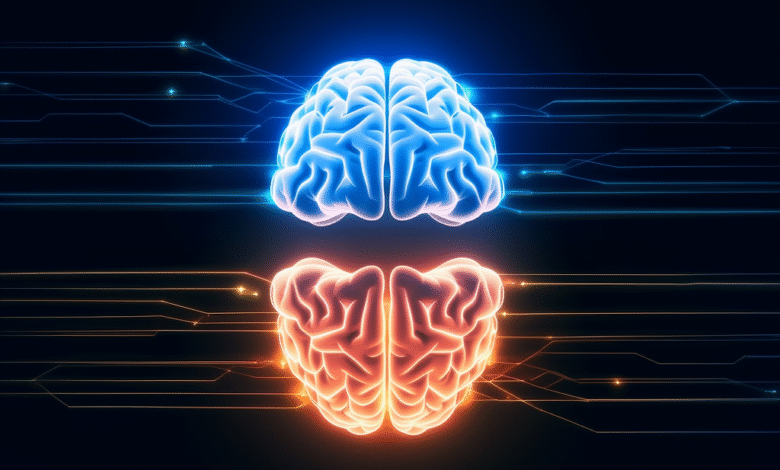New AI Model Boosts Reasoning 100x Faster Than LLMs With Minimal Training

▼ Summary
– Singapore-based Sapient Intelligence developed the Hierarchical Reasoning Model (HRM), an AI architecture that outperforms large language models (LLMs) in complex reasoning tasks while being smaller and more data-efficient.
– HRM mimics the human brain’s dual-system approach, combining slow, abstract planning (H-module) with fast, detailed computations (L-module) to avoid limitations like vanishing gradients and early convergence.
– Unlike chain-of-thought (CoT) reasoning, which relies on explicit text-based steps, HRM performs “latent reasoning” internally, reducing data requirements and improving efficiency.
– HRM achieved near-perfect accuracy on benchmarks like Sudoku-Extreme and Maze-Hard, surpassing advanced LLMs, and scored 40.3% on the ARC-AGI benchmark with minimal training data.
– The architecture’s efficiency enables faster task completion, lower costs, and potential applications in robotics, healthcare, and logistics, with future models aiming for self-correcting capabilities.
A groundbreaking AI architecture developed by Singapore researchers demonstrates reasoning capabilities 100 times faster than traditional large language models while requiring minimal training data. This innovation could revolutionize how enterprises deploy AI for complex decision-making tasks where speed and efficiency are critical.
The Hierarchical Reasoning Model (HRM) takes inspiration from neuroscience, mimicking how the human brain processes information through distinct systems for slow planning and rapid computation. Unlike conventional LLMs that rely on laborious chain-of-thought prompting, HRM operates in a latent space, solving problems internally without generating lengthy intermediate steps. This approach dramatically reduces computational overhead while improving accuracy on tasks that typically challenge even advanced AI systems.
Current LLM limitations become apparent when tackling problems requiring deep logical reasoning. The standard chain-of-thought method forces models to articulate every step in text form, creating bottlenecks in processing speed and increasing vulnerability to errors. HRM bypasses these constraints by implementing a dual-module structure, one component handles high-level strategy while another executes rapid computations. This division of labor prevents common neural network issues like vanishing gradients and premature convergence.
Testing revealed HRM’s remarkable capabilities across multiple challenging domains. On notoriously difficult Sudoku puzzles and complex maze navigation tasks where leading LLMs failed completely, HRM achieved near-perfect accuracy after training on just 1,000 examples per task. The model also outperformed much larger systems on the Abstraction and Reasoning Corpus benchmark, demonstrating superior generalization abilities despite its compact 27-million-parameter architecture.
Practical applications for this technology span numerous industries. Enterprise environments with data constraints or latency-sensitive operations stand to benefit significantly, particularly in fields like logistics optimization, robotic control systems, and scientific research. The model’s efficient parallel processing enables real-time problem-solving on edge devices, eliminating the need for cloud-based API calls to massive foundation models.
Beyond raw performance metrics, HRM offers compelling economic advantages. Training the system for professional-level Sudoku requires approximately two GPU hours, a negligible fraction of the resources consumed by conventional LLM training. For complex reasoning benchmarks, the entire training process completes within 200 GPU hours, making sophisticated AI accessible to organizations without extensive computational budgets.
Future developments aim to expand HRM’s capabilities into broader domains including healthcare diagnostics and climate modeling. Early experiments suggest these brain-inspired architectures may eventually surpass text-based systems in reliability and adaptability, particularly when enhanced with self-correcting mechanisms. As AI continues evolving, this research demonstrates that breakthroughs in reasoning efficiency may come not from scaling model size, but from redesigning architectures to better emulate biological intelligence.
(Source: VentureBeat)